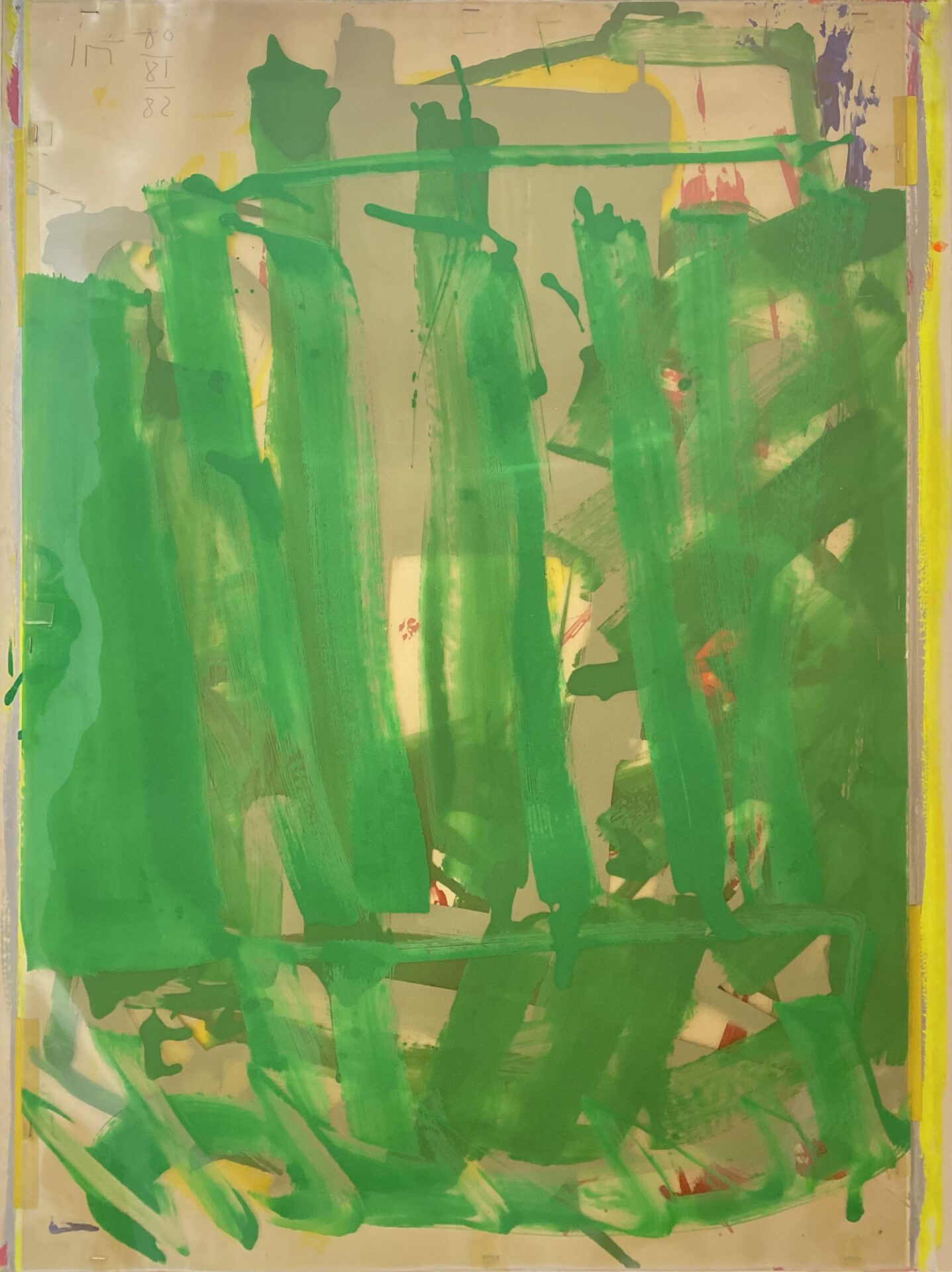Biography
Imi Knoebel (Klaus Wolf Knoebel) is a German painter and sculptor of the Minimal Art movement.
From 1962 to 1964 he attended the Werkkunstschule Darmstadt together with Imi Giese (1942-1974), where he learned constructive and structural composition exercises based on ideas from the Bauhaus preliminary course of Johannes Itten and László Moholy-Nagy.
In 1964, together with Giese, he transferred to the Düsseldorf Art Academy in the commercial art class of Walter Breker. From 1965 on, both Imis – like his friend Rainer Giese, Knoebel took the first name Imi (“Imi + Imi”) – managed to be accepted into the Beuys class in room 20 through extravagant appearance, whereby they, however, at times together with Jörg Immendorff and Blinky Palermo, occupied the neighboring room 19.
Joseph Beuys propagated the radical change in the concept of art and society. Knoebel dealt with the liberation of art from any content and function. Initially Knoebel created black and white line paintings (1966-1968). Under the influence of Kasimir Malevich and his “Black Square”, Knoebel created two-dimensional sculptures made of plates lying on top of each other (e.g. Sandwich I and Sandwich II, Pinakothek der Moderne, Munich) or of colorfully painted aluminum slats and plates that partially overlap each other, resulting in patterns similar to those of Piet Mondrian (e.g. INNINN, Pinakothek der Moderne, Munich).
Knoebel’s reduction is evident in a concentration of pictorial form and material. The result is an arsenal of stretcher frames and geometric forms made of wood fibreboard: cubes, arched elements, segments of circles or rectangles, which together form a basic spatial vocabulary that works on its own and whose structure the visitors* should perceive and sensually experience: Cuboids are sometimes metres high in the room, sometimes lean flat against the wall or hang as monochrome “panel paintings”.
The first installation “Raum 19”, created in 1968, is located in the Dia Center, New York. In 1992, Knoebel created a second version for the Hessisches Landesmuseum Darmstadt for the immediate neighborhood of Joseph Beuys “Block Beuys”, so that students (Knoebel) and teachers (Beuys) are adjacent as they were at college.
From 1968 Knoebel used photography as an artistic medium. He used slides to project light fields onto walls and photographed rooms rhythmized by light. In 1970, during a night-time drive through Darmstadt, he projected an x-shaped beam of light onto buildings. The extensive slide and photo series of “Projection X” are in the collection of the Hessisches Landesmuseum Darmstadt.
Together with Giese and Blinky Palermo (pseudonym for Peter Heisterkamp), he formed a Minimal Art movement among the Beuys students – in contrast to other Beuys students of the same time as Jörg Immendorff, who turned to agitprop art. In the early 1970s, he was a regular visitor to the Ratinger Hof scene meeting place in Düsseldorf’s old town, which Carmen Knoebel ran together with Ingrid Kohlhöfer (the wife of Christof Kohlhöfer).
